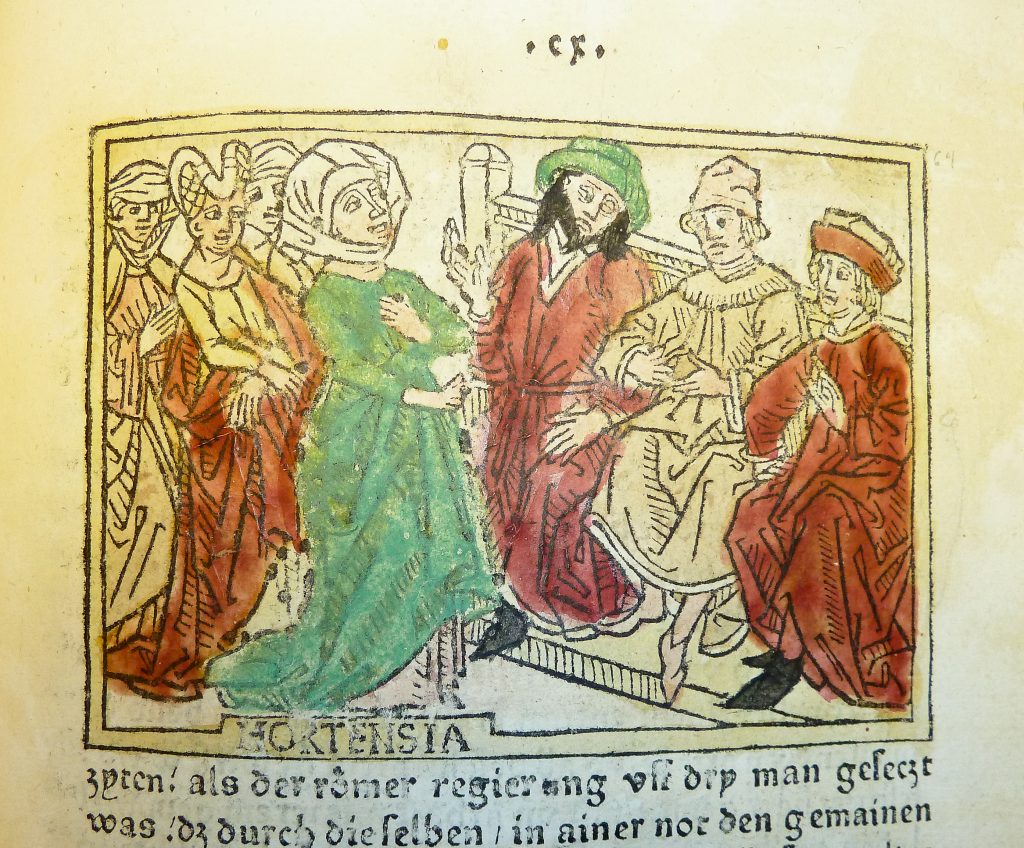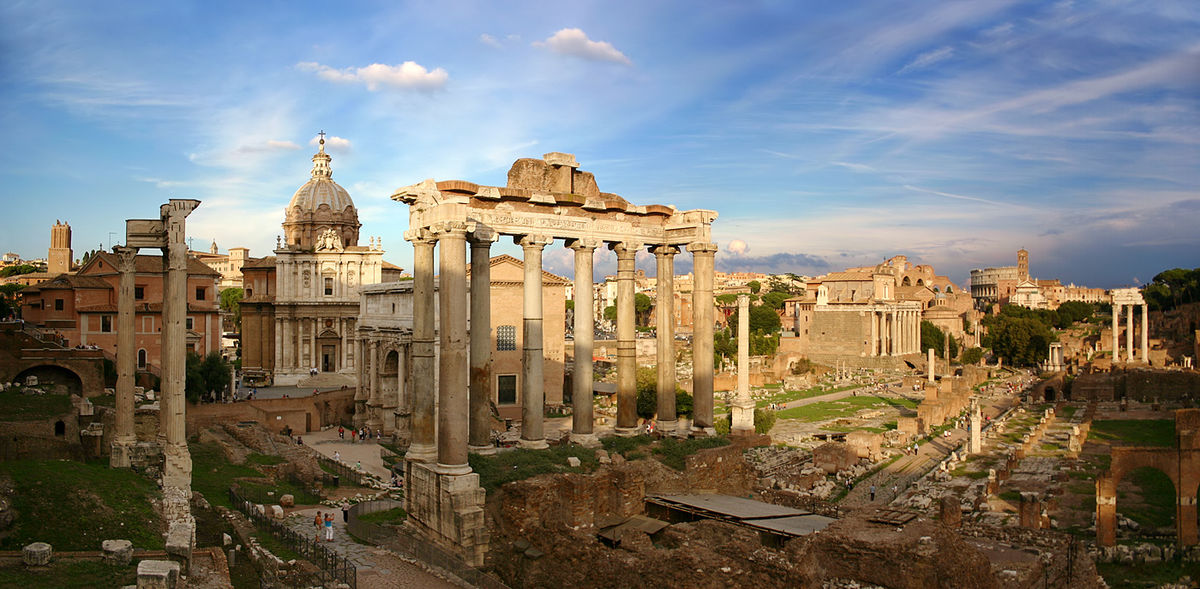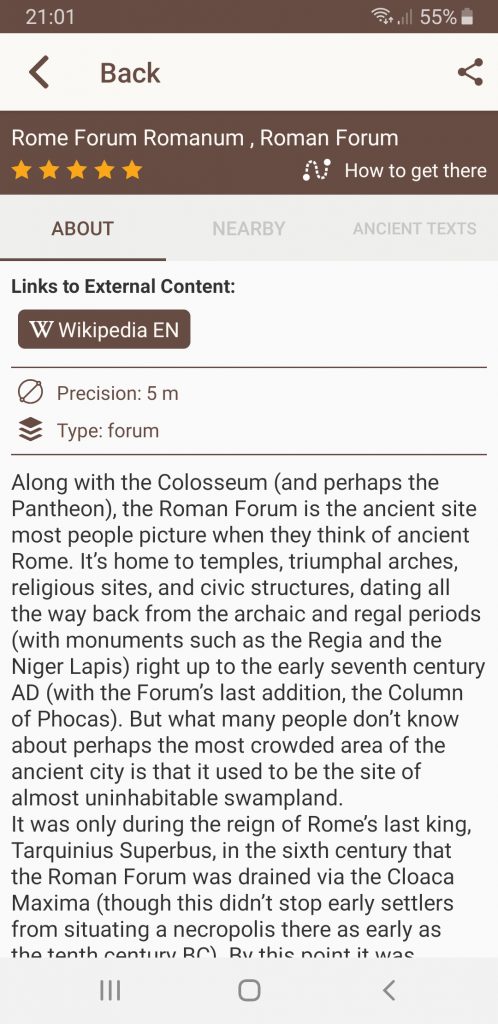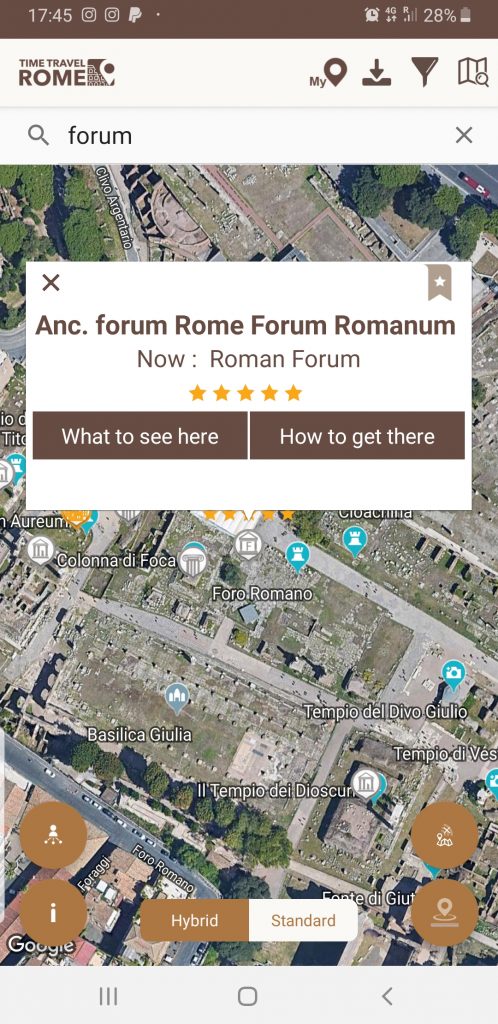Nestled between the Palatine and the Capitoline Hills, the Forum Romanum was the heart of activity in ancient Rome. To this day its ruins attract millions of visitors. The area was originally a thick bog, entirely uninhabitable. Taquinius Superbus, the very last king of Rome, ordered the area drained by the construction of the Cloaca Maxima, one of the world’s earliest examples of a complex sewage and drainage system. It soon became an important market and meeting area. Over the centuries, high government officials funded new temples and civic buildings in the forum. Around the 6th century B.C., the first rostrum was built in the forum. It was enlarged and changed over the years but remained the most important speaking platform in Rome. In 42 B.C., frustrated by unfair taxation, a female orator named Hortensia spoke out in the Forum Romanum.
Desperate Taxation

On the fateful Ides of March in 44 B.C., Julius Caesar lay dead, assassinated by fellow Senators. Unfortunately, the conspirators had given little thought to their next moves after the murder. Caesar’s friends and family were able to arouse the people in sympathy. They turned the Republic against the very men who proclaimed they had saved it. Mark Antony, Octavian, and Lepidus joined together to form the Second Triumvirate and take charge of Rome. Together, they waged a long war against the assassins of Caesar. By 46 B.C. they were drowning under the overwhelming expenses of the protracted campaign.
Their solution was not a popular one. Following in the footsteps of the dictator Sulla, they began mass proscriptions. They condemned numerous men to death as traitors, and confiscated their means and property. It was a tumultuous time of shifting allegiances, but many of those proscribed were suspiciously wealthy, and their crimes against the state rather nebulous and unspecified. The proscriptions brought significant money into the war fund, but not as much as the triumvirate had hoped. They next instituted a tax on 1400 of the richest women in Rome. The women chosen had to make a full valuation of all of their property, and the triumvirs would name the amount required from each woman. Any that attempted to hide assets must pay fines to the informants that had betrayed them.

Hortensia the Orator
Many women gathered in protest, and considered it most appropriate to appeal to the women of the three triumvirs. They obtained audience with Octavia, Octavian’s beloved sister, and also with Antony’s mother. Both were kind and allowed them to speak their concerns. When they approached Fulvia, Antony’s wife, she refused to see them, and sent them away with unbelievable rudeness. Frustrated and upset, they took advantage of an old law allowing women to speak publically in times of war, and forced their way into the forum to openly address the three triumvirs themselves.

The woman they had elected to speak on their behalf was Hortensia. She was the daughter of Quintus Hortensius, a wealthy and well-educated man who was well-known as a great orator. In fact, he was the principal rival to the famous Cicero himself. With such a father, it is unsurprising that Hortensia also possessed a gift with words. Her father taught her Greek and Latin literature from a very young age. As she grew older, she concentrated her studies on rhetoric and oration as her father had. She was married and had one daughter, but after her husband’s death in 67 B.C., she returned her focus to the study of oration.
Speech Before the Magistrates
On that day in 42 B.C., she stood bravely in the forum and rebuked the three triumvirs. “You have already deprived us of our fathers, our sons, our husbands, and our brothers, whom you accused of having wronged you; if you take away our property also, you reduce us to a condition unbecoming our birth, our manners, our sex. If we have done you wrong, as you say our husbands have, proscribe us as you do them… But why do we share the penalty when we did not share the guilt? “Why should we pay taxes when we have no part in the honours, the commands, the state-craft, for which you contend against each other with such harmful results?”
The triumvirs initially responded angrily, and demanded that their lictors drive the women from the Forum. Yet the crowds in the Forum Romanum, impressed by Hortensia’s speech, raised a protest. The triumvirs cooled their tempers, and said they would consider the matter and return a decision the following day. They did indeed concede the issue to a degree, reducing the number of women required to pay the tax from 1400 to 400, and also instituting a tax on all men of a certain level of wealth.

The angry crowd may have influenced their backpedaling, but it is likely that the triumvirs also gave thought to Hortensia’s articulate argument. Contemporary men of learning praised her speech, style, and skill. Valerius Maximus wrote that the great Quintus Hortensius lived again through the words of his daughter. Hortensia was one of only three women ever recorded to have spoken publically before the magistrates of Rome. Her courage and intelligence that day won her a small victory against the powerful 2nd triumvirate.
This article was written for Time Travel Rome by Marian Vermeulen.
Photo: Forum Romanum Rom by Stefan Bauer, http://www.ferras.at is licensed under CC BY-SA 2.5
Sources: Appian, Civil Wars; Valerius Maximus, Factorum et Dictorum Memorabilia.
What to See Here?
Along with the Colosseum (and perhaps the Pantheon), the Roman Forum is the site most representative of ancient Rome. It is home to temples, triumphal arches, religious sites, and civic structures. Structures date all the way back from the archaic and regal periods (with monuments such as the Regia and the Niger Lapis) and right up to the early seventh century AD (with the Forum’s last addition, the Column of Phocas). In the Roman Forum, the problem is not what to see but what you have time to see. From the Arch of Titus that greets you at the top of the Via Sacra right through to the Arch of Septimius Severus that stands near the slopes of the Capitoline, archaeological treasures litter the area. That said, many of its older (and often more interesting) monuments are ruined almost beyond recognition.
In terms of physical remains, the most impressive monuments in the Roman Forum are the third century Curia Julia and Arch of Septimius Severus, the skeletal structure of the temples of Vespasian and Saturn, and the enigmatic yet intriguing site of the Temple of Vesta and House of the Vestals. The key to the Roman Forum is to read and to explore, and to take the time to understand what it is you’re looking at—at least as best as possible, given the often-flimsy nature of the evidence. Do this, and you’ll find something amongst its ancient ruins that brings the glory of ancient Rome to life.
To find out more: Timetravelrome.





